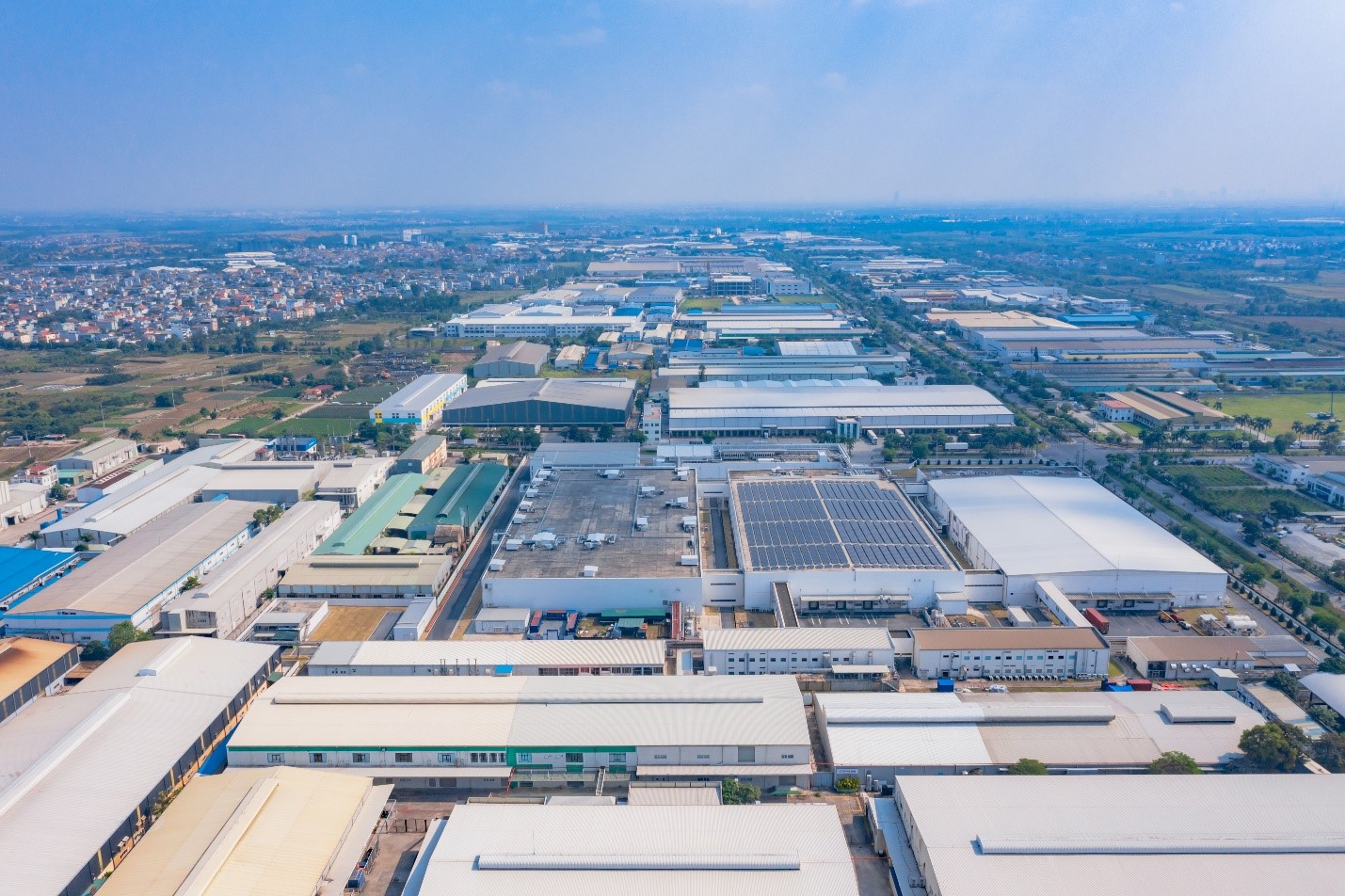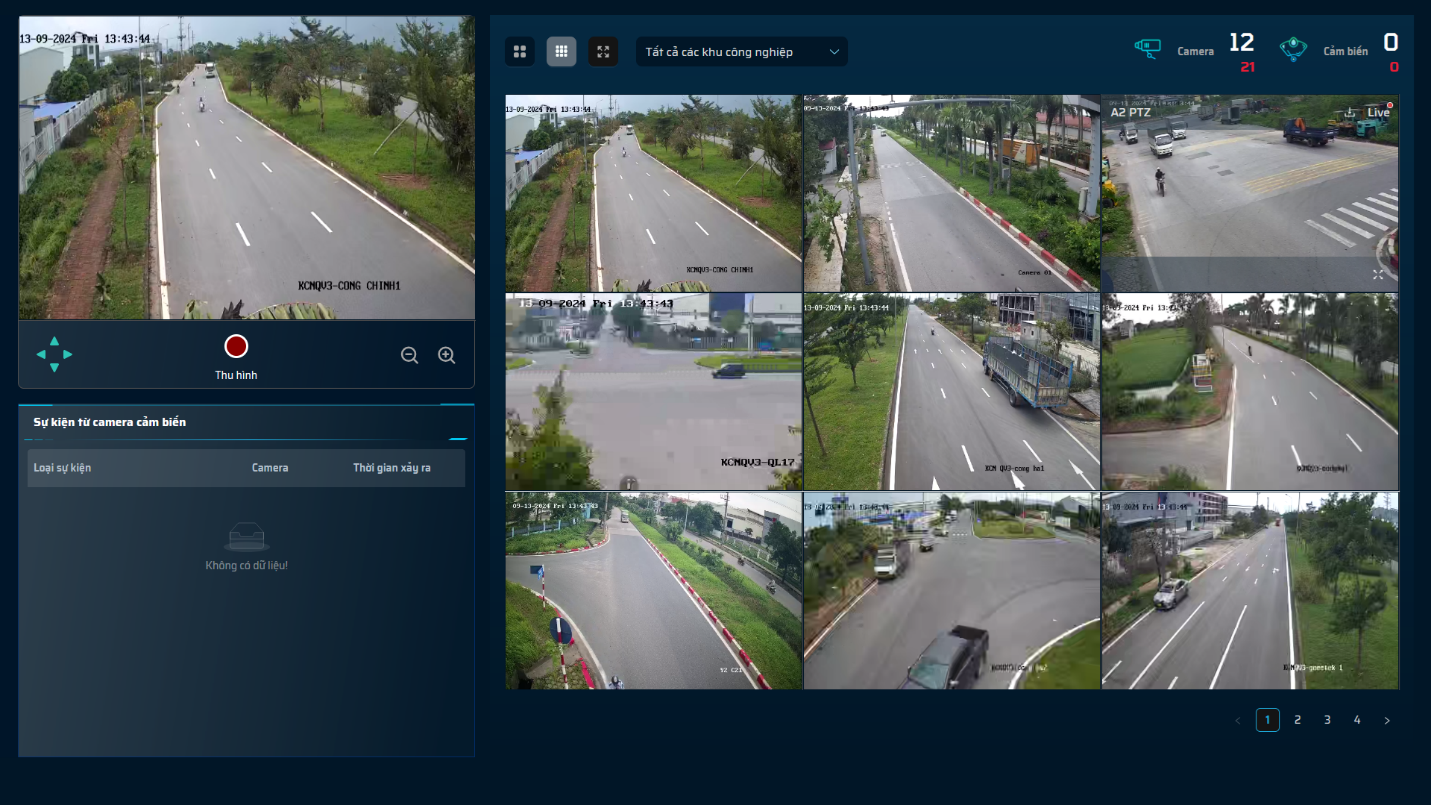In Vietnam, the dedication to environmental sustainability and industrial growth is executed at both the manufacturing business level and among investors in industrial park real estate. Nonetheless, several obstacles must be addressed to implement the eco-industrial park concept on a wide scale.
Problems arising from actual implementation
In recent years, Vietnam has established five prototype industrial parks that adhere to the eco-industrial park concept, following the framework provided by the Global Eco-Industrial Park Program, supported by the State Secretariat for Economic Affairs (Switzerland) (SECO). Amata and Deep C are notable names among them.
The execution at Amata demonstrates that the project has engaged 30 firms and persuaded 18 to enroll in the eco-industrial park initiative.
Prior to its initiation in 2020, Amata attained just 41% of the eco-industrial park index. By January 2024, Amata attained 86% of the score after three years of labor. Achievements encompass the establishment of shared service infrastructure, including squares and retail complexes; vocational training and job placement services for firms inside the industrial park; and the provision of firefighting services in collaboration with Bien Hoa City and other industrial parks.
Amata has not finalized the eco-industrial park model owing to practical application limits, despite the existence of explicit legislation regarding the conditions for establishing eco-industrial parks (Decree 35/2022/ND-CP of the Government). The ambiguity of legal restrictions regarding the utilization of reclaimed water, solar energy, and renewable energy significantly hampers project execution. There is a deficiency of specific procedures to assist firms in implementing green and circular technology...


Panorama of Deep C Industrial Park, Hai Phong. Source: Deep C Website
Deep C specializes on energy solutions, industrial symbiosis, and the recycling of waste and wastewater. Water conservation strategies and enhanced resource efficiency resulted in the conservation of about 5.8 million kWh of power, 90,000 m³ of water, and a reduction of CO2 emissions of 10,588 tons in 2022. Three renewable energy projects have produced 5,851 MWh of electricity, representing 1.1% of the total usage (553,581 MWh) of Deep C and all existing tenants in the industrial park.
The company has challenges due to its lack of a license to enable other businesses to repurpose cleaned wastewater or utilize it for commercial applications. Furthermore, there are no explicit guidelines or protocols for the issuance of licenses. This complicates the attraction of companies for participation.
The problem of capital and perception
JLL's research at the Vietnam Industrial Real Estate Forum 2024 identified two primary obstacles to the large-scale implementation of the eco-industrial park concept. The absence of a thorough implementation plan and an adequate regulatory framework, coupled with insufficient financial incentives, diminishes developers' willingness to engage in ecologically beneficial activities.


There are still many barriers in converting traditional industrial parks into eco-industrial parks.
From his practical experience working with many enterprises developing industrial park real estate, Mr. Bui Quoc Khanh, General Director of TNTech Joint Stock Company, stated, “A significant issue is the necessity to alter the thinking of Vietnamese firms. These firms must comprehend that advancing in a green and sustainable manner enhances competitiveness in the global market. Establishing eco-industrial parks not only attracts investors to create sophisticated technologies that mitigate carbon emissions but also enhances operational efficiency through optimized manufacturing lines."
Furthermore, Mr. Khanh identified two issues associated with the transition from typical industrial parks to eco-industrial parks. The primary issues are the capital problem and the deficient ecological reference system.
“Enhancing infrastructure, developing management systems, implementing sensors, and detecting pollutants will incur substantial costs for enterprises. Transitioning from a conventional industrial park to an ecological industrial park incurs more expenditures than initiating the construction of an entirely new eco-industrial park from scratch," said Mr. Khanh.
Untangling the bottlenecks for businesses developing eco-industrial parks
Experts assert that pursuing sustainable development encompasses not just regulatory compliance but also serves as a strategic approach, yielding significant competitive benefits and enduring success. To attain the Net Zero objective by 2050, Vietnam must expedite the execution of its roadmap and regulatory framework, as well as enhance financial incentives and green financing initiatives.
Furthermore, it is vital to enhance communication to assist firms in acknowledging that the shift to eco-industrial parks is unavoidable if they want to draw additional investors to their facilities.
Upon the alteration of consciousness, developers and industrial parks will investigate and include sustainable components into their designs to align with emerging market demands.


Many Vietnamese technology companies are ready with smart industrial park solutions. Source: TNTech.
At all stages, seamless coordination is essential among many stakeholders, including government entities, international organizations, industrial park real estate developers, manufacturers, technology firms, industrial park management units, media agencies, and so on. Should this be achievable, Vietnam might expedite its progress and emerge as a frontrunner in the development of smart industrial parks.